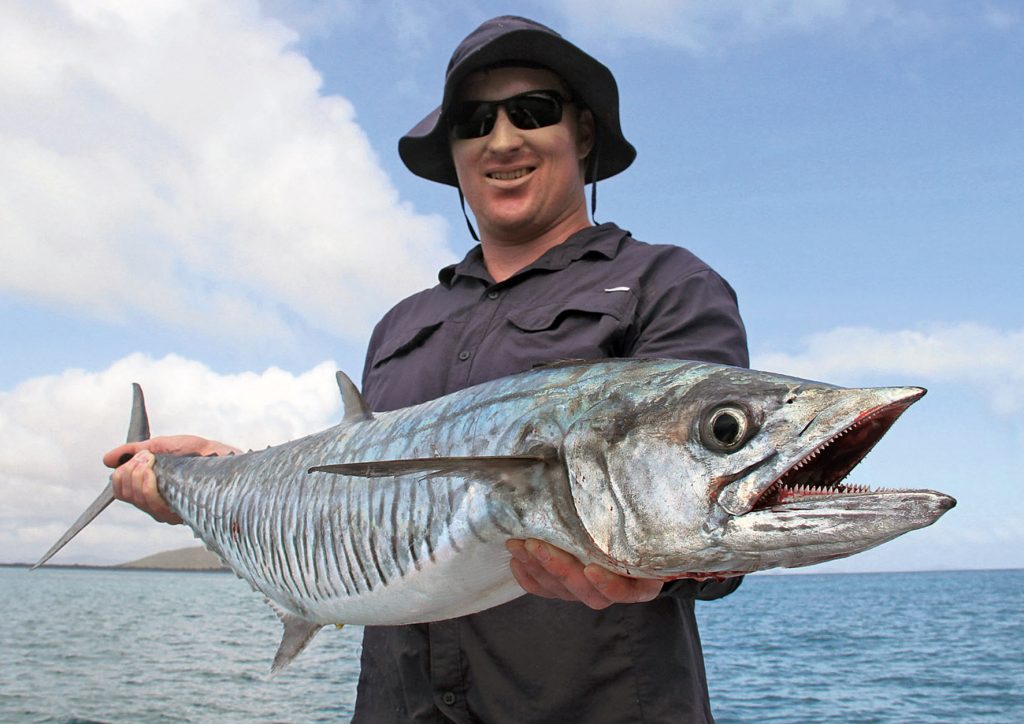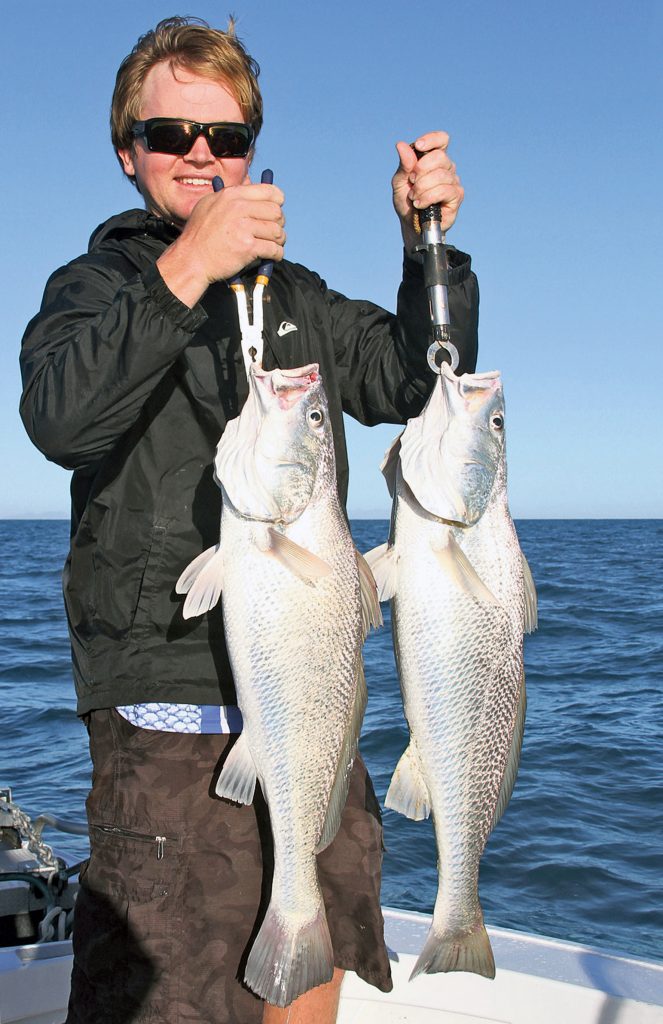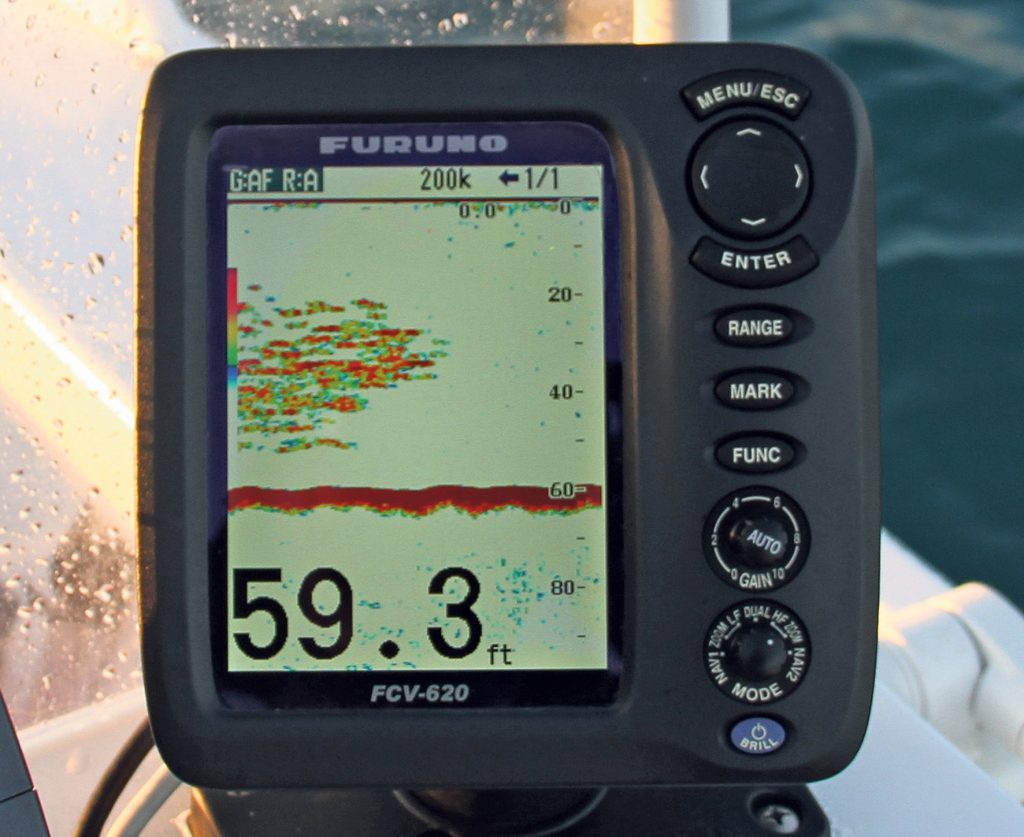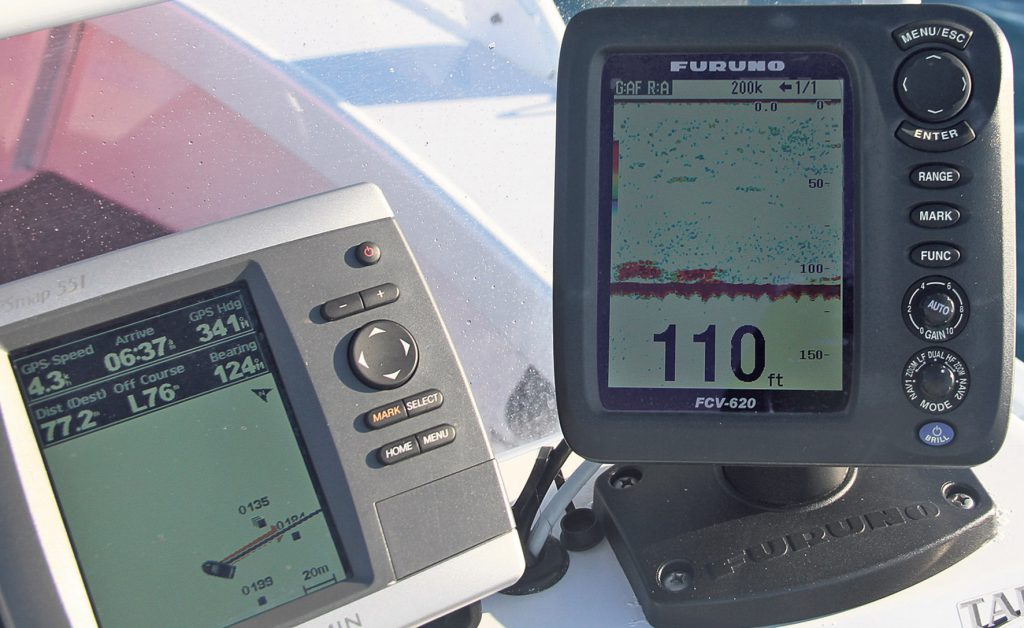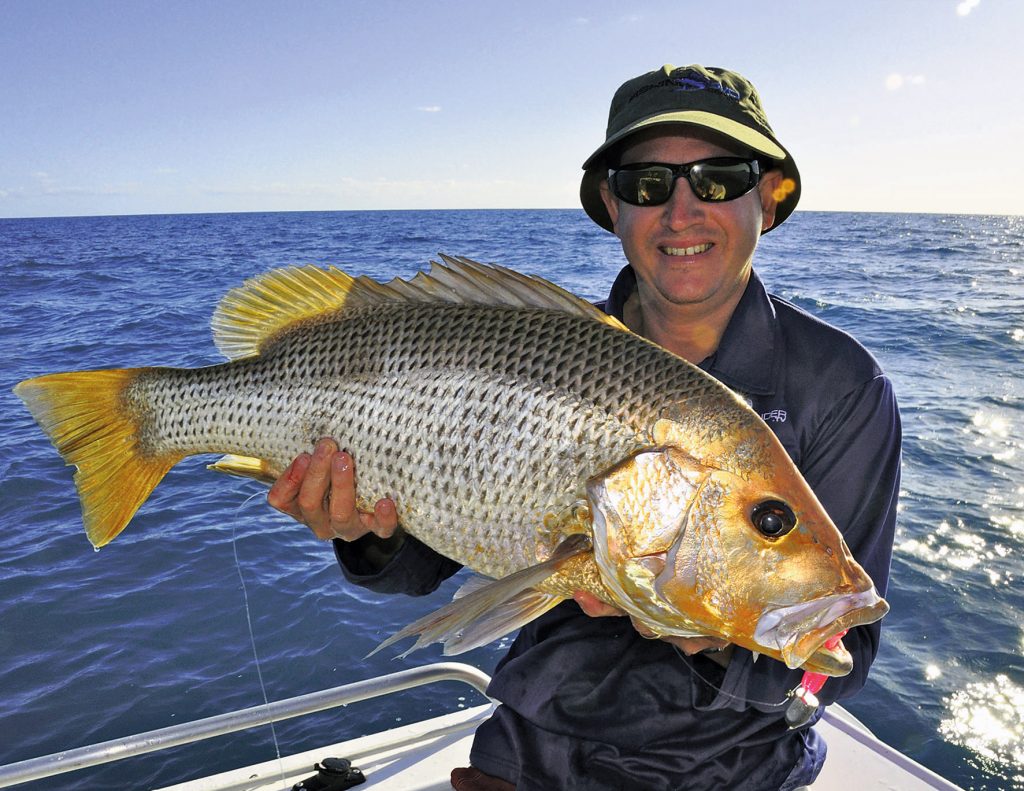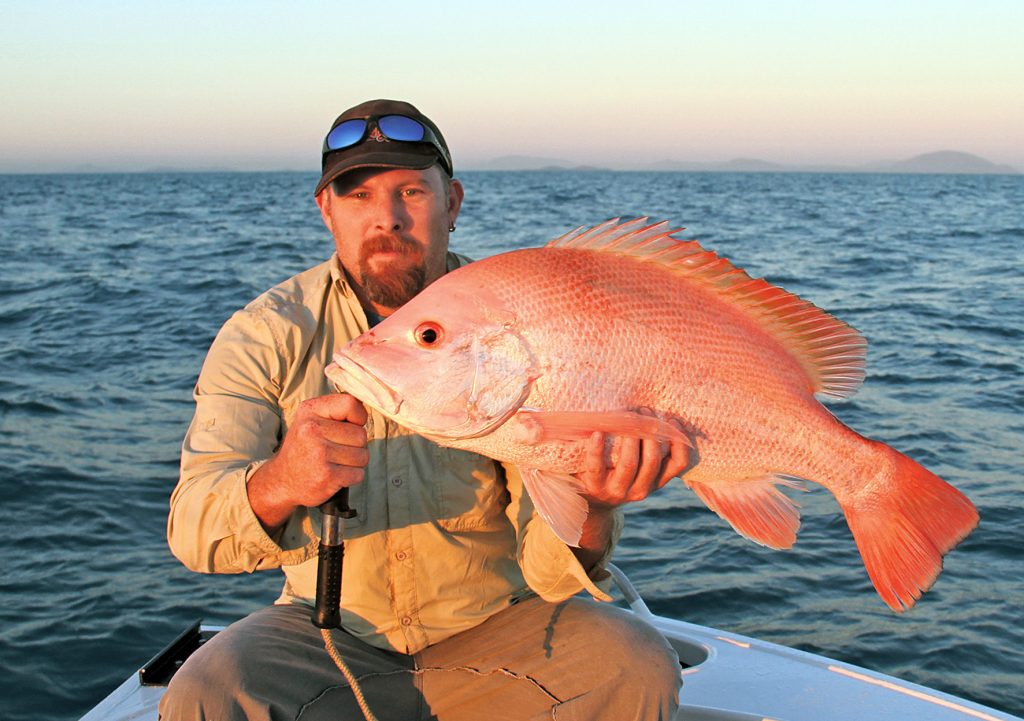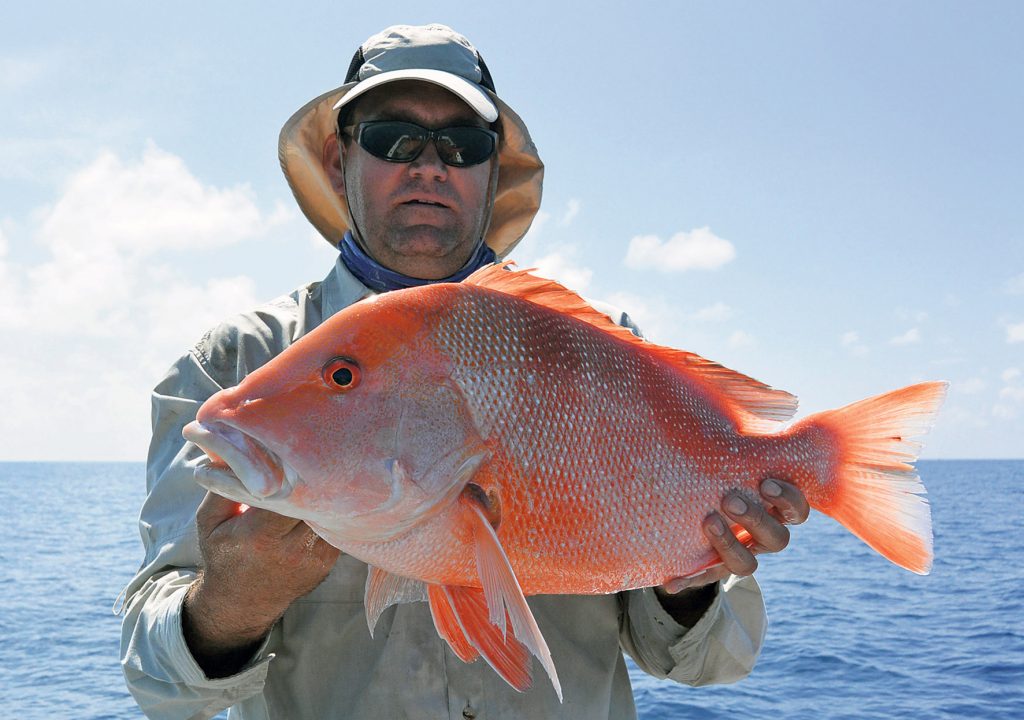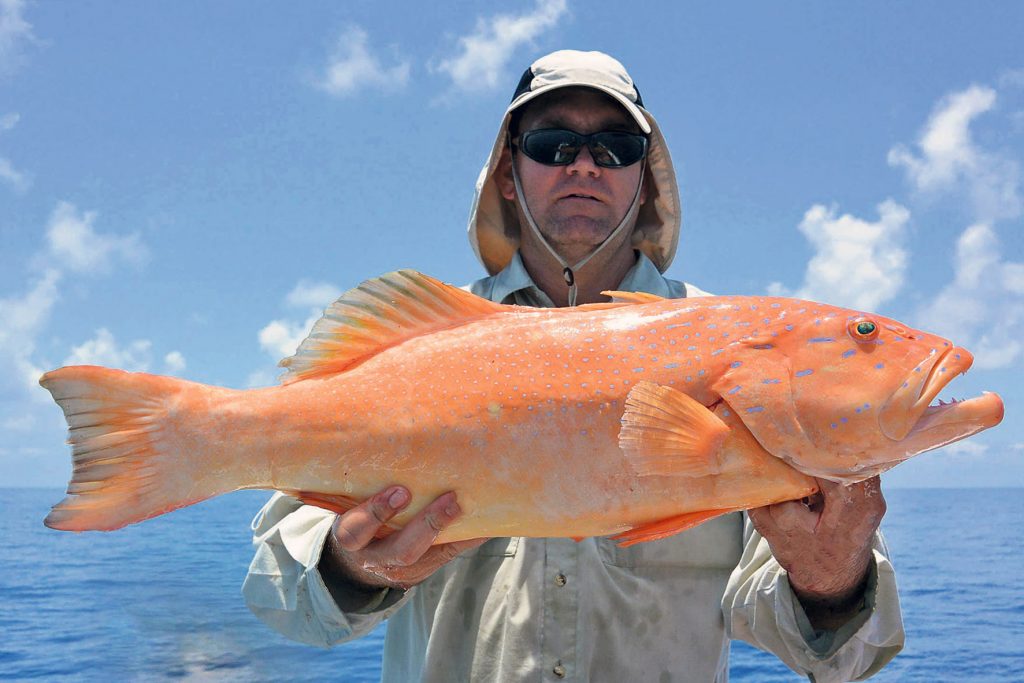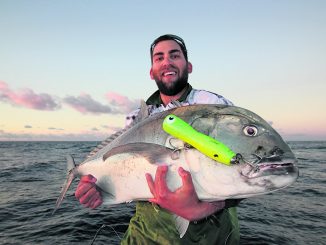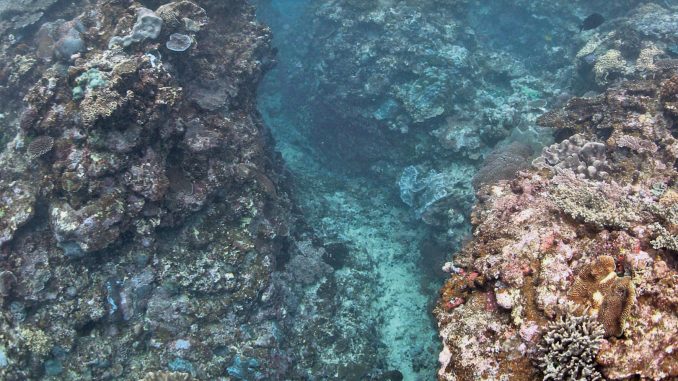
by Dan Kaggelis •
When fishing offshore areas, especially deep water, anglers are typically faced with the choice to either anchor or drift.
Whilst this may seem like a small insignificant choice, it can in fact be quite crucial to your fishing success as different variables can lend themselves to each option. Being able to recognise when it’s best to anchor or best to drift is an important fishing skill and hopefully the following feature will help build some knowledge and skill towards this.
One of the first and most obvious variables to consider when deciding whether to anchor or drift is the strength and movement of the tide. When fishing deep water and sometimes even shallow water the big runs in tidal flow can make it very difficult for baits or lures to get to the bottom. This difficulty in reaching the bottom is very much enhanced when anchored due to the boats fixed position. When this is the case it is best to drift fish as the speed of the boat will match the speed of the current flow, hence making it easier to get your lure of bait to the bottom. Knowing your tides will help with this as you can plan to fish spots that are optimally drift fished during the larger tides, while those that are best fished with less current flow and smaller tides can be fished on neap tides.
Knowing your turf
Another variable to consider when choosing whether to anchor or drift is your knowledge of the ground you are fishing. If you are still testing the waters or wanting to do a bit of exploration then drifting will give you a much wider scope to do this. Drifting will allow you to cover a much wider area then sitting in the same spot whilst anchored. I’m one of those anglers who is always on the hunt for that new honey hole and I always invest a quarter of my fishing time looking for new ground. This can often mean just drifting wide of existing marks to see what else may be around, and you can often be pleasantly surprised at what you will find on the periphery, especially when chasing deep water reds.
Fish like saddle tail snapper and red emperor will often move from isolated structure to isolated structure and often these small lumps or holes are several hundred metres apart. By drifting around these areas you can often turn one red hot spot into another very quickly, which can make it easier to find fish when they are a little more spread out. Drifting allows the angler to still explore and fish at the same time and it is often a case of just keeping one eye on the sounder and one on the rod tip.
What’s below
The next factor to consider when choosing whether to anchor or drift is the type of structure you are fishing. Very isolated structures like small lumps, rise, gutters, wrecks or wonky holes can be extremely difficult to anchor on as the smallest margin of error can see baits or plastics out of the strike zone and off the structure. The other factor to consider is that the structure you are targeting is quite small and if you accidently hook up to it with your anchor you can potentially tear it apart which can destroy the mark. I’ve lost count of the number of wrecks or isolated bombies torn apart over the years from anchors, which is a shame as they become quickly covered by sand and dissolve. This sees the mark completely gone for good. In this situation it is better to drift as it can be easier to drift onto the mark especially when the winds and tide are favourable.
Some of my favourite red emperor and golden snapper spots are the size of a small car but after two or three drifts it becomes quite easy to find the right drift pattern every time. The best way to do this is to take notice of which way the tide and wind is pushing and make an educated guess as to which way you will drift. Set yourself a good 60m from the mark and mark a waypoint. From this point you can observe where you have drifted and make finer adjustments from the marks on your GPS. Sometimes it can take a number of drifts to get it right, but it sure beats pulling up an anchor in a 100ft of water. The other benefit of drifting is that fish are not always hanging around the main isolated structure, and if you manage to drop you anchor in the perfect spot to be right on the spot then your lure or bait, while right on the spot, may not actually be there the fish are. Sometimes bait may move off the main structure with the tide and the predatory target fish may follow. Drifting allows you to cover a spot more comprehensively and caters for a wider range of conditions when it suits.
Anchor Away
Alternatively if the structure you are fishing is more condensed and predominant, then anchoring is a much better option. For example drifting over hard reef with very prickly and snaggy structure often leads to the angler catching the bottom. This can quickly see terminal tackle supplies disappear, so if you are getting snagged quite frequently then anchoring will be a better option.
Another time when anchoring is a must is when conditions are very still and the lack of wind and current does not allow the boat to move towards the desired structure at all. In this case it is best to park up and anchor straight on the spot. The other advantage of anchoring on a spot is your ability to burley. Being able to sit in a spot and set a berley trail enables the opportunity for the fish to come to you. This can be very effective on fish such as coral trout and snapper which are very inquisitive and will follow the commotion of a berley trail all the way to the your hooks.
Target species can also be a factor when choosing whether to drift or anchor. When chasing pelagic species like mackerel it is often best to drift when fishing over little structure or bait schools. This allows the angler to reposition over bait easily and deploy lures and jigs when ready. Alternatively if you are fishing over a shoal or reef where the structure is holding the fish, anchoring can be a very good option as you can keep baits or lures around the structure that is attracting fish. When chasing demersal species like saddle tail snapper or red emperor it is often more desirable to drift as they often hold on smaller isolated structure, making them much harder to locate. However when located in good numbers on the drift it is a very good option to deploy the anchor if the current and conditions allow. In this case the angler can use a combination of both anchoring and drifting to achieve the desired result.
Tackle Choice
When choosing to drift or anchor it is also a good idea to consider what type of gear to use. Whilst all gear will be effective in an anchored situation, drifting is very much a different story. When drifting in deep water, the constant movement of the boat will see your bait or plastic eventually begin to lift of the bottom. This means the angler has to feed more line down to get back to the bottom.
With spin reels the angler needs to open the bail arm to feed out line whilst if you are using a lever drag overhead you only simply need to free spool the drag. Whilst this may seem not much of a difference it can be a big difference when drift fish all day, or even worst when you get hit on the drop and the bail arm is still open. This is why lever drag reals are better suited for drifting conditions.
Both drifting and anchoring have their advantages and disadvantages, knowing when to apply them to different conditions and in different locations is what is important. So next time you are out in the boat and pull up to a fishing spot consider the ideas above as it may mean the difference between a good day fishing or a good day boating.



